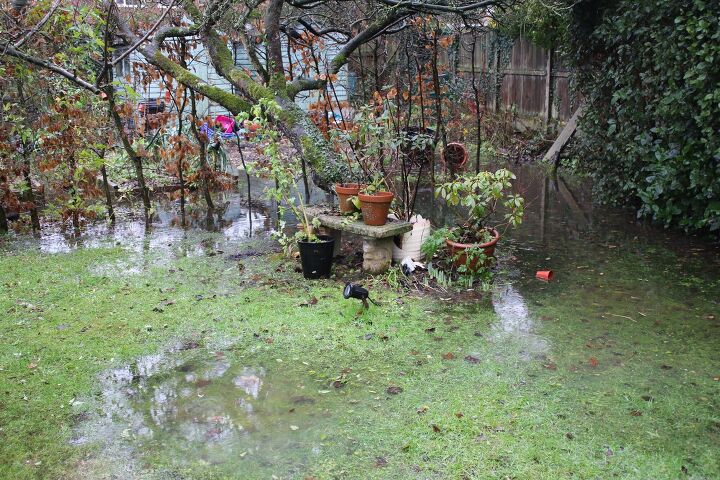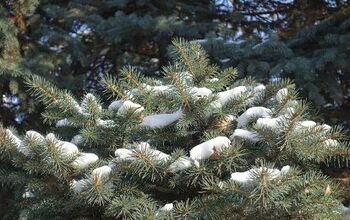Can Plants Survive Flooding?

Whether you’re a farmer or just a homeowner who takes pride in their garden, you likely have a reasonable fear of floods. Flooding creates dangerous road conditions, kills plants, and can quickly erode the soil in your garden. So, can plants survive flooding?
Plants can survive flooding in many cases if they have deep roots, but it depends on the duration of the flood. You can help ensure your plants will survive flooding if you put mulch in your soil beds to absorb water and protect the soil and roots. It also helps to install a French drain in your garden and put rain barrels out to collect water that would otherwise damage your plants.
There is no reason to panic during a flood. Instead, you should pay attention to the forecast and plan to create a garden that can withstand excess rainwater. Follow along as we explore everything you need to know about flooding and how you can help your plants survive.
What Happens To Plants During Floods?
Depending on how long it lasts, plants often wilt during floods. This happens when the soil and roots take on too much water. Soil and roots typically retain water to evenly distribute it on a normal day when it’s not flooding.
During a flood, the soil and roots cannot keep up with the constant influx of water. This can lead to soil and root erosion. Root erosion is a serious problem for any plant, and it will likely struggle to bounce back if the roots become too damaged.
Plants cannot get enough oxygen when the soil is waterlogged. In the early stages of a flood, a plant’s flowers typically wilt and wither. Once a flood has gone on for a week or more, a plant is more likely to experience soil and root erosion. Check a plant’s roots after a flood to make sure they are still viable.
Do Plants Survive Floods?
Plants do survive floods in many cases, but they can die if the flooding period lasts too long. They are more likely to survive floods if the plants have deep root systems. Unfortunately, most plants cannot survive floods that last longer than a few days.
If the roots sustain too much damage, a plant cannot bounce back. Many plants can survive up to a week during floods, but others will die within the first few days. Look for flood-tolerant plants if you live in an area where flooding is common.
Flood-tolerant plants often have fibrous root systems that can absorb lots of water. Plants like black-eyed Susan, catmint, aster, and beardtongue all typically do well during floods.
Do Deep-Rooted Plants Help With Flooding?
Deep-rooted plants help with flooding. Extensive and dense root systems help protect against soil and root erosion. They can also help retain and slowly disperse water evenly when too much water is coming in.
Many native grasses and trees, such as tall fescue grass and red maples, have deep roots that help them survive flooding. Plants like chrysanthemums, balloon flowers, and cushion spurges also have deep roots that help with flooding. Plants with deep root systems are less likely to rot and die during periods of heavy rainfall.
How To Prepare For A Flood
It’s necessary to prepare for a flood if you want your plants to survive. This includes everything from digging drainage ditches to putting mulch in your garden. Let’s look at the best ways to prepare for a flood so your plants will survive.
Mulch
You can save yourself a lot of trouble if you put mulch in your garden before a flood. Mulch can help absorb much of the water that would otherwise go straight into the soil and roots. This acts as a buffer between the root system and the rainwater. It also helps improve soil drainage.
Mulch also helps infuse the soil with essential nutrients. You can also protect your plants from weeds with mulch. The rainwater may wash away some of the mulch during a flood, but it’s still better than leaving your plants unprotected.
Drainage Ditch
If you plan enough, you can protect your garden with a drainage ditch. Drainage ditches, also known as French drains, help redirect rainwater so it doesn’t erode the soil and roots. This comes in handy during a flood when the water would otherwise pool throughout your soil beds.
Depending on the yard, you can set up a drainage ditch to drain into a creek, lake, pond, or tank. Many homeowners direct the water toward a tank so they don’t waste the water. This is a great option if you want to lessen your carbon footprint and prepare for flooding.
Clean Your Gutters
Gutters are a yard’s first line of defense against flooding in most cases. They help prevent water from pooling in specific parts of your yard. However, gutters won’t send rainwater where it’s supposed to go if they are clogged.
Ideally, you should clean your gutters up to twice per year or as needed to clear obstructions. You can tell it’s time to clean your gutters if they sag or if rainwater spills out from them. It typically costs between $100 and $180 to hire a professional to clean your gutters.
Rain Barrels
Rain barrels have become increasingly popular as homeowners look for environmentally friendly ways to conserve water. Not only do rain barrels help you save natural water, but they can also help your plants survive flooding. A few carefully placed barrels throughout your yard can catch much of the rainwater that would otherwise damage your plants.
Plan carefully and place the barrels in spots where you have plants with weaker root systems or poor soil drainage. That way, you can protect the more rain-sensitive plants in your garden. A few days after the flooding ends, you can use the rain in the barrels to sustainably water your garden.
Are Floods Worse Than Droughts?
Floods and droughts are equally dangerous. Extended droughts can even create bad conditions, where a flood can do even more damage than it otherwise would. That’s because long-term droughts dry the soil out severely.
Once a flood hits after a drought, the soil won’t be able to drain well and the excessive rainwater will cause severe damage. Floods are dangerous because they can kill plants, overflow bodies of water, and create dangerous road conditions. Droughts are dangerous because plants can’t get enough water or nutrients and they negatively affect animals.
Depending on where you live, you may be vulnerable to both floods and droughts. Preparation is key before a flood or a drought. For a drought, it’s about making sure you have enough water stored up. Floods require homeowners to come up with solutions to absorb water, such as mulch, rain barrels, and drainage ditches.
Summing It Up
Plants can survive flooding, but it varies based on the plant and how long the flood lasts. Deep-rooted plants are more likely to survive floods. Your plants will also better withstand a flood if you have plenty of mulch throughout your garden.
The mulch will infuse the soil with nutrients and improve drainage to prevent soil and root erosion. However, it’s hard to protect plants during long-term flooding, as the soil and roots are more likely to erode and die. Dig drainage ditches, clean your gutters, install mulch, and put out rain barrels to collect water before a flood.
Related Guides

Nick Durante is a professional writer with a primary focus on home improvement. When he is not writing about home improvement or taking on projects around the house, he likes to read and create art. He is always looking towards the newest trends in home improvement.
More by Nick Durante













![Finishing Basement Without Permit [Is It Really Illegal?]](https://cdn-fastly.upgradedhome.com/media/2023/07/31/9070078/finishing-basement-without-permit-is-it-really-illegal.jpg?size=350x220)













